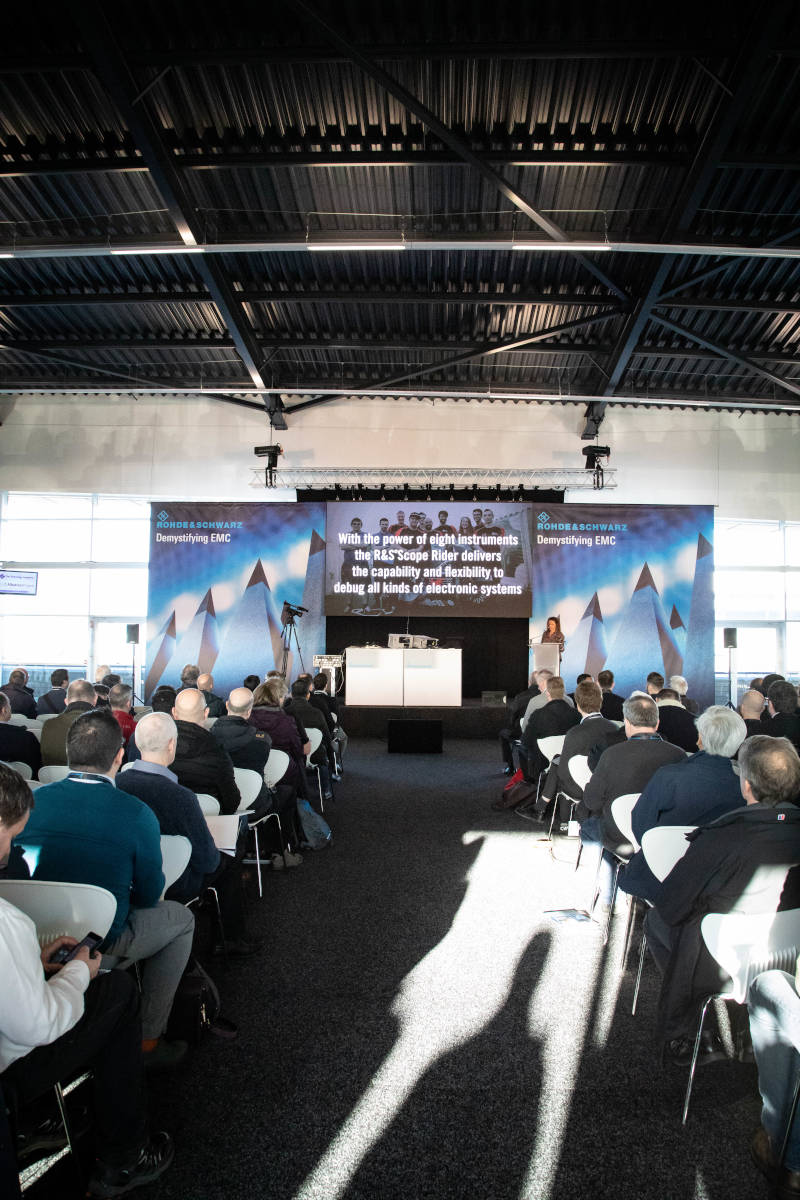Sponsored Content: Keep it Quiet: Overcoming the Latest Challenges in EMC Regulation
by Alex McCarthyConsumers and companies alike require high quality electronic equipment to support everyday lives and more of these devices are now wireless enabled, writes ROHDE & SCHWARZ.
Technology is expected to support us in the office, homes, schools, hospitals and in our cars. We expect connectivity everywhere and we expect it to work. The importance of compatible operation among electronic devices and radios is critical to us as users and in the function of our businesses. The growth of innovation is exponential and so is the expectation that devices will operate without fault or interference.

In addition, market surveillance authorities around the world are reviewing their activities as they come under more pressure to be stricter, with the aim to increase detection of products that fail to conform to rules on electromagnetic compatibility (EMC) and risk potential interference with other products or radio services. The reasoning is clear: with more and more high-tech equipment in everyone’s cars and pockets, offices, and streets – and a society ever more reliant on their services to function safely and economically – it’s more important than ever that all these different devices can coexist harmoniously in close proximity to each other.
Moreover, market enthusiasm for wireless devices is putting increasing pressure on the available radio spectrum. With the spread of the IoT, that pressure is expected to continue to rise. It’s imperative that GSM, Wi-Fi, Bluetooth, ZigBee, LoRa, Tetra, and other radios use the spectrum efficiently, with spectral awareness and minimum out-of-band emissions. Coming over the horizon, new multi-radio equipped autonomous vehicles, home automation and the use of robotics will up the ante even more.
All electronic products must conform to international and national EMC and radio-equipment regulations. Legislation is in force beyond the EU, including North American and Asian territories. Companies understand that technical compliance is only one part of the picture. The associated administrative procedures and documentation that describes the tests that have been applied and supports the mandatory declarations of conformity must also be correct and kept up to date.
EMC Experts: In House and In the Community
EMC is an issue for companies’ engineering as well as compliance personnel. Of course, each side has distinct goals and must rely on a different skillset and knowledge base to achieve them.
Engineers need a broad understanding of how to interpret and apply the technical regulations, and the techniques to use through design and testing to satisfy every applicable requirement.
Compliance personnel, for their part, must have a clear grasp of complex legislation and the numerous individual stipulations referenced by each standard. Ensuring that declarations of conformity are correct and justified, and maintaining the documentation to support them, demands attention to detail and ongoing vigilance to maintain awareness as existing standards can be amended or replaced without notice.
Both groups can benefit from taking part in the growing community of EMC specialists active throughout the industry – from product design and marketing organisations, to contract test services, and test and measurement equipment suppliers.
Demystifying EMC
Returning for 2020, the 6th Demystifying EMC event will take place on Monday 10 February 2020 at the Silverstone Wing, in Northamptonshire. Presented by experts from a variety of organisations spanning the design, test and regulatory compliance spectrum, Demystifying EMC is established as one of the primary training events delivering high quality, free of charge training to the industry. As with previous years, there will be five different tracks and sessions to choose from, and time in the day to network with peers, speak with industry experts and see demos.
On the day, Michael Derby of ACB Europe will explain more about how to get radio products approved, aided by Charlie Blackham of Sulis Consultants. They will discuss compliance issues concerning installing radio modules, EU RED and CE-Mark compliance, and how to satisfy FCC requirements when seeking acceptance in US markets.
Martin Wiles of Albatross Projects will look at the new CISPR EMC standards being finalised for radiated emissions measurements below 30 MHz using magnetic loops, and explore the feasibility of using and validating existing anechoic chambers under these conditions. This will be of particular interest to the automotive community, as well as other groups. Tamara Monti of Dassault Systèmes will give insights into electric-drivetrain simulation, from the EMC standpoint, both at component and system level, and James Pawson of Unit 3 Compliance will provide a frank and down-to-“earth” perspective on ground issues.
Lee Hill of Silent Solutions will be back – giving the keynote titled ‘The five EMC things they didn’t put in your education’. He will also be presenting further presentations with practical applications and troubleshooting demonstrations throughout the day.
For more information and to register, please visit: www.rohde-schwarz.com/demystifying-emc
Content: Rohde & Schwarz